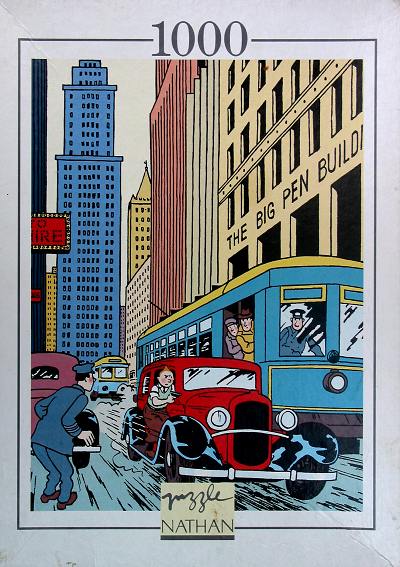Beijing, 3 August 2012
These last few evenings I’ve been sorting through the photographs we took during our summer vacation. Much of our time was taken up with doing necessary things – checking repairs to our apartment, visiting relatives, that sort of thing – but we managed to squeeze in a three-day visit to the battlefields of the Western Front. It’s something I’ve been wanting to do for at least forty years, since I first started reading the English poetry and prose of the War.
Because my knowledge of the War is primarily British, our visit ran along the line of the British sector, from the Ypres Salient – the battles of Passchendaele, Ypres, Messines Ridge – to the battlefields of Neuve-Chapelle, Loos, Vimy Ridge, and finally to the battlefields of the Somme.
I’m not a military historian; I’m not interested in the lay of the land, nor do I want to know which regiment swept over this hill to take that objective, or what weapons they used to do it. In any event, as you gaze across today’s peaceful countryside it’s hard to imagine the scenes of a hundred years ago. Even at Vimy Ridge, or Delville Wood, or the Newfoundland Memorial, where the land has been left as it was at the end of hostilities, the ground does not speak to you.
No, what really drew me to this strip of land is the iconography of death. How did the belligerents deal with the enormity of their military dead after the guns fell silent? 2 million dead in Germany, 1.4 million in France, 1.1 million in the British Empire.
Wilfred Owen wrote:
What passing-bells for these who die as cattle?
Only the monstrous anger of the guns
Only the stuttering rifles’ rapid rattle
Can patter out their hasty orisons.
No mockeries now for them; no prayers nor bells;
Nor any voice of mourning save the choirs, –
The shrill, demented choirs of wailing shells;
And bugles calling for them from sad shires.
But each country made sure that there would be memorials for their dead. Indeed, the length of the Western Front is thickly dotted with memorials and cemeteries. We visited only a handful of the bigger ones, mostly British Empire but also a few French and German. As we drove, signs to many, many others beckoned: Le Trou Aid Post Cemetery, Post Office Rifles Cemetery, Crump Trench British Cemetery, L’Homme Mort British Cemetery, Dud Corner Cemetery, Happy Valley British Cemetery … “so many, I had not thought death had undone so many”.
How did Governments choose to present these dead millions to their citizens? As I flip through my photos, in the British Empire cemeteries I see a predominance of white and green: white stone and green grass, leavened by splashes of colour from the roses and other flowers planted at the base of each gravestone. I see few trees.

The buildings echo those of that other, Roman, Empire that the British so aspired to emulate: columns, rounded arches, cupolas, brick mixed with stone.

And I see grand phrases written on the walls, commemorating victory, heroic sacrifice, eternal remembrance, and the gratitude of a nation. But I also see scrolling on and on, from one wall to another, the names of the missing, those with no known grave, whose macerated flesh disappeared into the mud of the Western Front. And I see the ages of those who died – so young most of them, my children’s age.

The colours white and green are echoed in the French memorials. But here the Christian motifs are stronger: white crosses for the buried (or white gravestones for the non-Christians) and churches or church-like structures for the memorials. Here too grass dominates the green – trees are rare. And here too the grass’s green is splashed with colour from flowers at the base of the crosses. And here too grand rhetoric is carved into the walls.

German cemeteries differ radically. Everything about them is much more sombre. Black, not white, is the dominant colour of crosses, gravestones and buildings. Although as elsewhere green is ever present, it is a darker green, for trees grow throughout the cemeteries. Their leaves, their bark, their shadows darken hues throughout the enclosures. And there are no flowers to brighten the scene, no triumphant language on the walls.

I suppose the sombre tone of the German cemeteries reflects their defeat. The British and the French could at least claim that their dead were justified by their victory. But the Germans had nothing to show for their dead. Yet to me, the Germans show the better sensibility. For are the deaths of so many young people ever justifiable? They represent a terrible loss for us all, echoing down through the decades. And despite all the protestations to the contrary, they will be forgotten. Already now, how many of the soldiers lying in the soil of northern France and Belgium are remembered by family members or friends? They are just becoming names on a wall or gravestone, and even those names will one day erode away. The poet Carl Sandburg caught the idea well in his poem “Grass”:
Pile the bodies high at Austerlitz and Waterloo,
Shovel them under and let me work –
I am the grass; I cover all.
And pile them high at Gettysburg
And pile them high at Ypres and Verdun.
Shovel them under and let me work.
Two years, ten years, and passengers ask the conductor:
What place is this?
Where are we now?
I am the grass.
Let me work.

__________________
Pictures:
Tyne cot memorial: mine
Thiepval memorial: http://www.euro-t-guide.com/See_Photo/France/NW_Amiens/Thiepval_Memorial_2011_16.jpg
Menin Gate names: http://upload.wikimedia.org/wikipedia/en/e/ee/Menin_Gate_names.jpeg
Notre dame de Lorette: http://arras-france.com/wp-content/uploads/2008/05/notre_dame_de_lorette.JPG
Langemark: http://www.euro-t-guide.com/See_Photo/Belgium/NW_Ypres/Langemark_German_War_Graves_2011_08.jpg
Neuville St. Vaast: mine




































